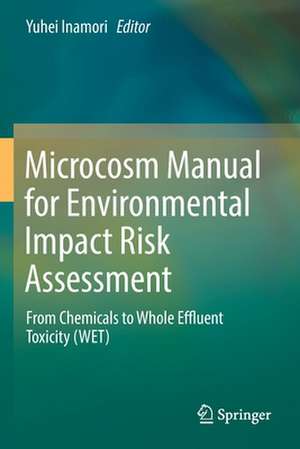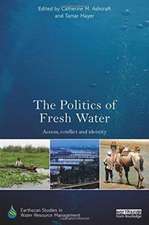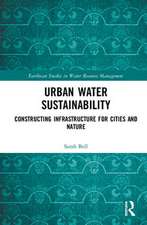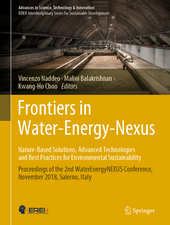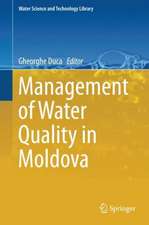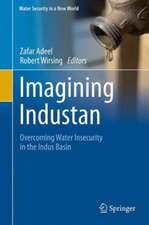Microcosm Manual for Environmental Impact Risk Assessment: From Chemicals to Whole Effluent Toxicity (WET)
Editat de Yuhei Inamorien Limba Engleză Paperback – 14 aug 2020
| Toate formatele și edițiile | Preț | Express |
|---|---|---|
| Paperback (1) | 582.12 lei 43-57 zile | |
| Springer Nature Singapore – 14 aug 2020 | 582.12 lei 43-57 zile | |
| Hardback (1) | 785.42 lei 43-57 zile | |
| Springer Nature Singapore – 4 iul 2019 | 785.42 lei 43-57 zile |
Preț: 582.12 lei
Preț vechi: 684.84 lei
-15% Nou
Puncte Express: 873
Preț estimativ în valută:
111.40€ • 115.88$ • 91.97£
111.40€ • 115.88$ • 91.97£
Carte tipărită la comandă
Livrare economică 14-28 aprilie
Preluare comenzi: 021 569.72.76
Specificații
ISBN-13: 9789811368004
ISBN-10: 9811368007
Pagini: 237
Ilustrații: XXI, 237 p. 143 illus., 85 illus. in color.
Dimensiuni: 155 x 235 mm
Greutate: 0.37 kg
Ediția:1st ed. 2020
Editura: Springer Nature Singapore
Colecția Springer
Locul publicării:Singapore, Singapore
ISBN-10: 9811368007
Pagini: 237
Ilustrații: XXI, 237 p. 143 illus., 85 illus. in color.
Dimensiuni: 155 x 235 mm
Greutate: 0.37 kg
Ediția:1st ed. 2020
Editura: Springer Nature Singapore
Colecția Springer
Locul publicării:Singapore, Singapore
Cuprins
Chapter 1. Introduction.- Chapter 2. Standardization of the microcosm N-system.- Chapter 3. Maintenance of microcosm N-system.- Chapter 4. Preparation of The microcosm N-system.- Chapter 5. Procedure for using THE microcosm N-system. Chapter 6. Estimation using microcosm N-system.- Chapter 7. Example assessment of the microcosm n-system.- Chapter 8. Coefficient of assessment FOR THE microcosm n-system.- Chapter 9. Application to whole effluent toxicity (WET) test.- Chapter 10. A Scaled-up model ecosystem verification Of THE microcosm n-system.- Chapter 11. A Subsystem microcosm verification OF THE microcosm n-system.- Chapter 12. Further perspectives.
Notă biografică
Yuhei INAMORI Born in Kagoshima, Japan, in 1947, Dr. Inamori received his B.S. and M.S. degrees in Agricultural and Biosystems Engineering from Kogoshima University in 1971 and 1973, and his Ph.D. in Biology from Tohoku University in 1979. He joined the Meidensha Co. Ltd. in 1973, became a senior researcher at the National Institute for Environmental Studies (NIES) in 1980, and became a professor at Fukushima University in 2007. He has been in his current position since 2014, and his current research interests include water and waste treatment technologies, bio-eco engineering, energy-saving technologies, and integrated watershed management. Dr. Inamori has also served as President of the Japanese Society of Water Treatment Biology (2013–2015) and has received many excellent paper awards from institutions like the Japan Society on Water Environment. He was also selected for the Friendship Award of the Chinese Government in 2009, the Minister’s Prize, and the Ministry of Environment Prize in 2013.
Textul de pe ultima copertă
This book offers a comprehensive guide to microcosms (N-systems) in multiple-species testing and aquatic ecosystem risk assessment. It provides standardized methods for creating the microbial ecosystem, and proposes a standardized microcosm system for environmental impact risk assessments. The book will be of interest to students and educators, researchers, government authorities, developers and manufacturers engaged in ecosystem preservation, water quality management personnel at sewage treatment or industrial effluent treatment facilities, and anyone involved in education, management and analysis evaluation for environmental standards and waste water quality standards.
Caracteristici
Comprehensively introduces readers to N-system microcosms Demonstrates how N-system microcosms can be used as a stable and highly reliable method for aquatic ecosystem risk assessment Promotes the standardization of the microbial ecosystem, allowing it to be used as model ecosystem testing method for multiple-species testing
